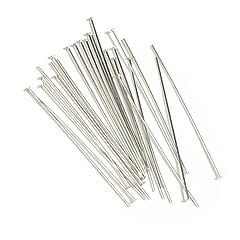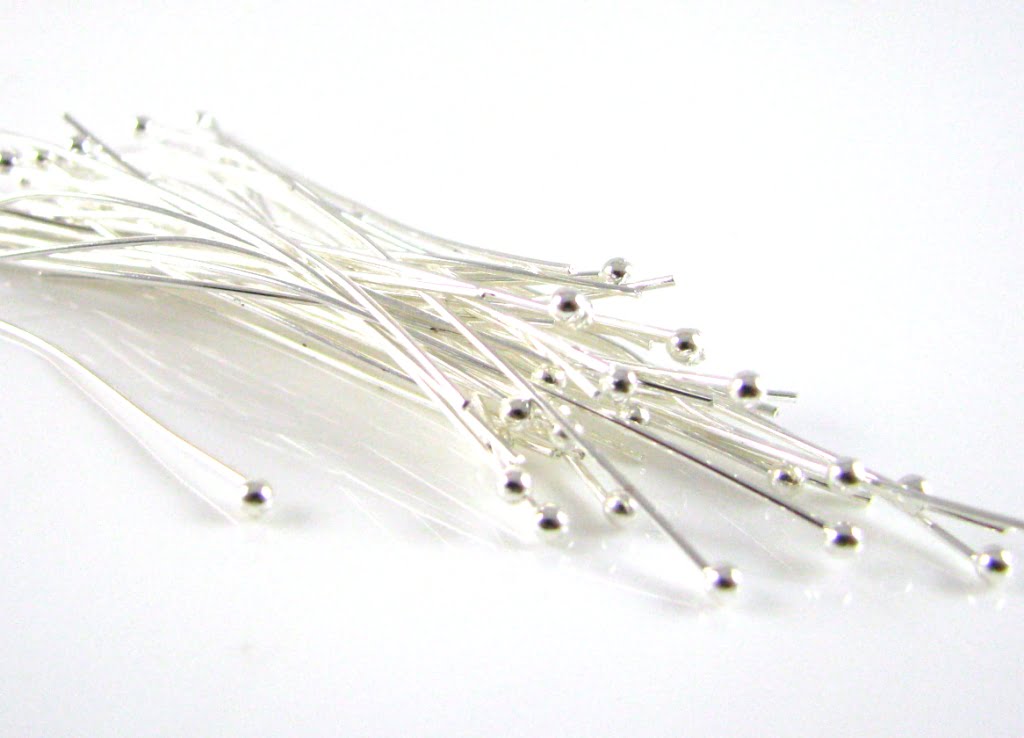Week 1: Blog Post 2 – Findings and Basic Jewellery Making Techniques
Well hello there! Thanks for checking back in to the new Spoilt Rotten Beads guest blog. Louise here again from Leviko Designs and I’ll be taking you today through some more jewellery making basics. Today we’ll be looking at ‘jewellery findings’ and some basic beading techniques which you’ll need to know how to do in order to get started.
Findings is a pretty odd name for what they encompass – this is not some Lord of the Rings style excursion to discover your lost ‘precious’ – although I quite like that analogy given how frequently lose the ‘finding’ I’m after. Nonsense aside, they are basically all the tiny little components that you use in order to put your jewellery together and to secure it in place.
And there are literally thousands of different types. We’ll look at some of the most well used ones during this post. First though we need to go through some basic techniques so that ‘doing stuff’ with these dinky little bits and pieces doesn’t seem so daunting. I’m not going to take you through them in detail because Spoilt Rotten Beads already has fantastic tutorials for the ones that I want to cover today.
Four Basic Techniques
Simple Loop: https://www.spoiltrottenbeads.co.uk/video/make-simple-loop/
Wire Wrapped Loop: https://www.spoiltrottenbeads.co.uk/video/make-wire-wrapped-loop/
Opening and Closing Jump Rings: https://www.spoiltrottenbeads.co.uk/video/use-jump-ring/
Crimping: https://www.spoiltrottenbeads.co.uk/video/learn-make-simple-sweetie-bracelet/
So, now you have some basic techniques under your belt, let’s look at the things you’ll need in order to put those techniques into practice.
Head Pins / Ball Pins / Eye Pins
As you can tell these are all pins. With just a head or ball pin, a single bead and your basic tool set you can make a simple pendant or dangles to add on to earring wires or a bracelet.
Head pins and ball pins are the same thing except that head pins tend to have a flat end which sits flush against whatever you’re threading on, whereas ball pins have a little ball which lots of people like for decorative effect.
Headpins:
Eye pins are slightly different. They are another way to make a dangle for an earring. Or you can attach them to each other to make a beaded chain. You can buy eye pins with one end already looped or use the ‘simple loop’ technique below to make your own from some wire.

You can also make your own decorative pins very easily and you can see how here:

Ear Wires
These come in all sorts of different styles and finishes. You can buy them ready made or you can make your own using tools specifically designed to make them super-fast and with a perfect shape every time: https://www.spoiltrottenbeads.co.uk/product/bead-buddy-1-earwire-maker/
Ear wires usually end with a simple loop which you can just open up to add on your gemstone or beaded dangle or a fun pre-made charm.

Jump Rings
Jump rings are little metal rings which can come either soldered or un-soldered, otherwise known as open or closed jump rings. The un-soldered or open jump rings have a break in them which allows you to open and close the rings using your chain nosed pliers. They come in different thicknesses and are using for attaching things which have a hole or loop such as charms or the little beaded dangle which we made above. On the picture below I’ve used a jump ring to attach a hematite dangle onto a chain for a finished necklace and onto a decorative bail for adding to a bracelet, which we will come to below. Closed jump rings I tend to use for the ends of bracelets where I don’t want to risk the jump ring coming off since bracelets tend to suffer a fair amount of pulling getting them on and off.

Crimp Beads / Crimp Tubes
As we saw in the first post there are two similar but different ways to secure your beading – crimp tubes and crimp beads. You can just squish either of them flat using your chain nosed pliers, but for a neater and more secure finish I prefer to use the crimp tubes and a pair of crimping pliers.

Lobster Clasp
A lobster clasp is so named because it looks like the claws of a lobster which is why they are sometimes also called a lobster claw clasp. You can use the little loop on the end to attach a jump ring, to secure beading wire using crimp beads/tubes, for adding directly onto a wire wrapped loop or for threading and knotting cord onto depending on the project you are undertaking.

Round Silver Plated Beads
I use these a lot. And by a lot I literally mean that I buy them by the 10,000! My best selling Solar System and Scottish Thistle ranges (both subject to copyright by the way so no pinching please – I do check!) both use silver plated beads as spacers, and my popular chakra and family birthstone pieces (also subject to copyright) use sterling silver versions as beads in their own right form the bulk of the bracelet. They are super versatile and come in many, many different sizes.

Helpfully, Spoilt Rotten Beads has all of these findings available in a really economical findings kit which also comes with its own storage box. You can find it here: https://www.spoiltrottenbeads.co.uk/product/360-piece-silver-plated-finding-kit/
Next time around we’ll be putting all of this into action with some fun and funky and some` effortlessly elegant pieces which will be amazing as gifts with Christmas coming up.
Have a fab day,
Louise


